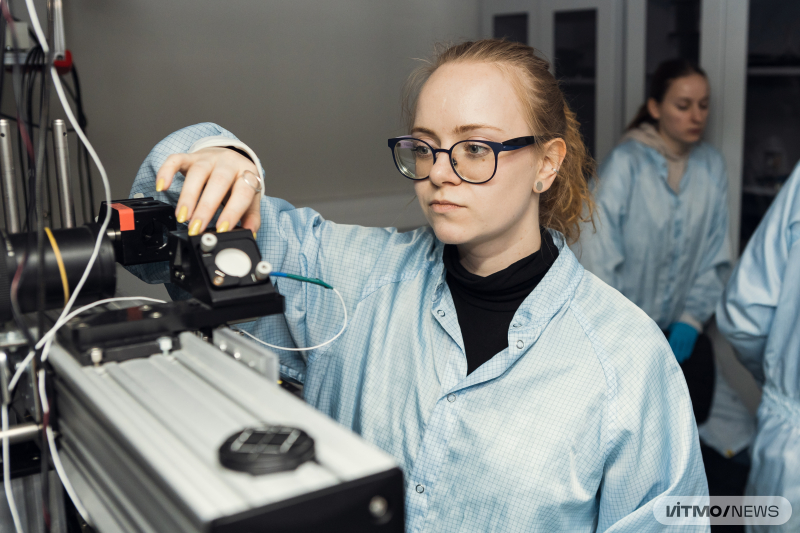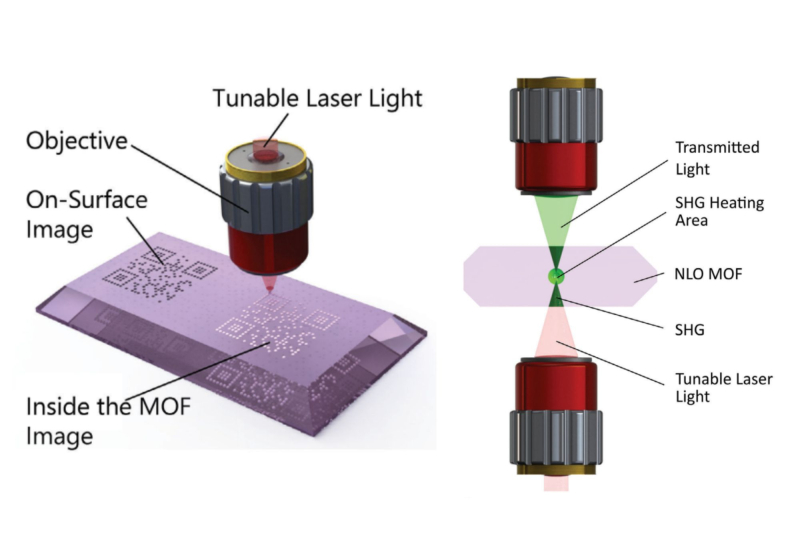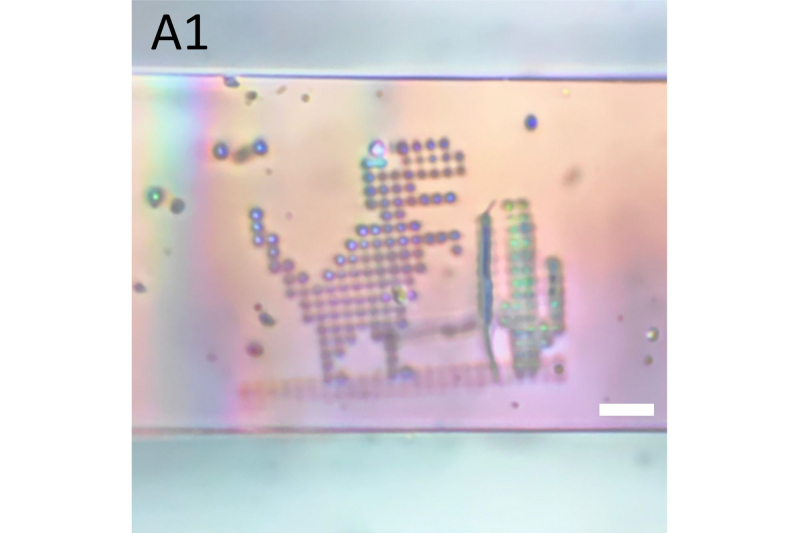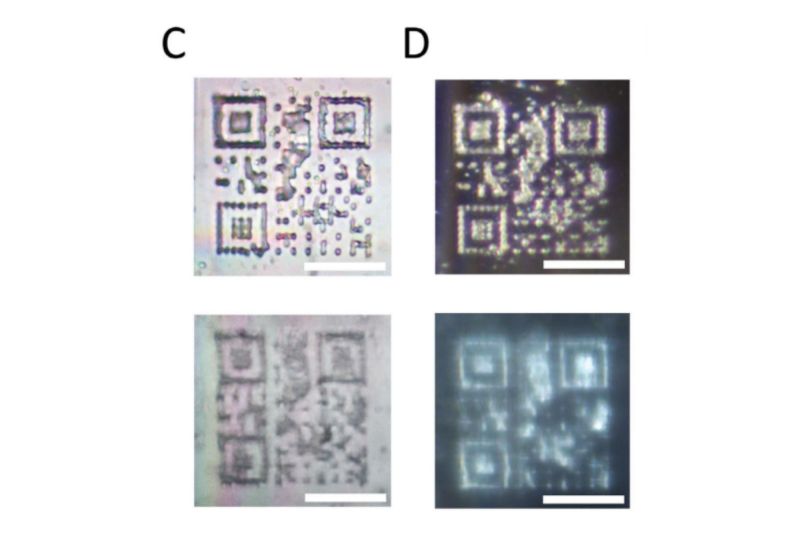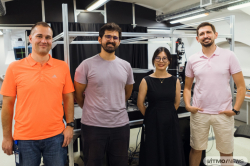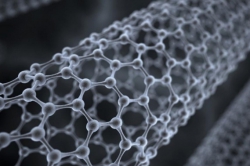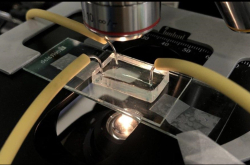Laser lithography makes it possible to create images on a material’s surface or inside it with a laser. Typically, different technologies are used to produce grayscale and multicolor images. For the former, it’s laser ablation, when a part of the material is removed from the surface with a laser pulse. And the latter is accomplished with photo-oxidation: a product is heated up by a laser, resulting in an oxide coating forming on its surface. What’s more, each approach requires a different material with specific properties. Until recently, it wasn’t possible to create grayscale and multicolor images on the same material.
Researchers from ITMO University succeeded in combining these two laser writing methods, demonstrating how grayscale and color images can be created on the same material with different approaches.
For this purpose, the physicists used the Er-BTC metal-organic framework (MOF). This material contains erbium metals connected by organic molecules (trimesic acid); it is very porous and has a crystalline structure. Thanks to this structure, the MOF demonstrates non-linear properties – it transforms laser radiation, cutting its wavelength in two. With a shorter wavelength, light is even more focused on a single point, creating a small color defect on a product. The size of this focusing point determines the color of the resulting pixel.
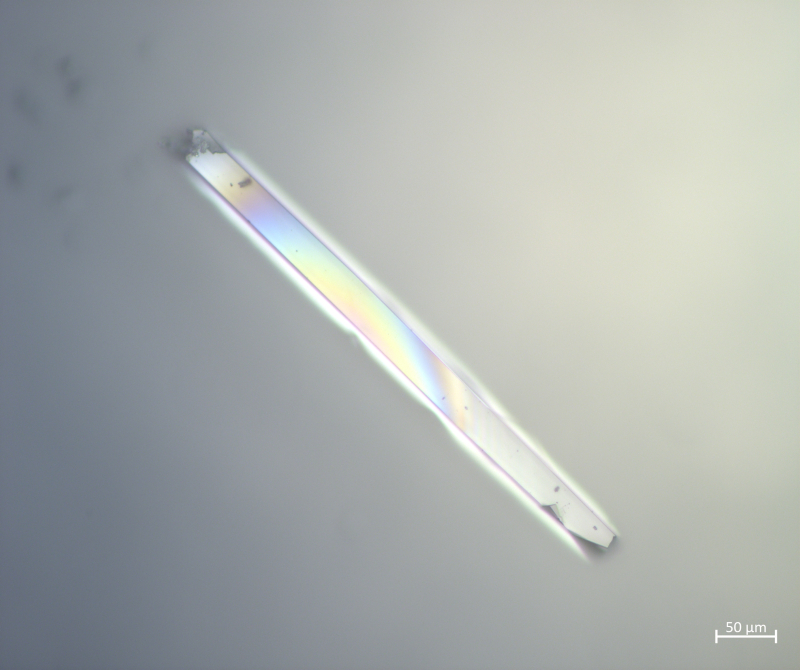
The Er-BTC metal-organic microcrystal. 5 micron scale. Photo courtesy of the researchers
The researchers are planning to use the new technology to produce uncloneable trademarks on specialty goods, preventing counterfeit. Unlike other materials, MOFs make it possible to create trademarks using several colors, thus encoding more information.
In their experiments, the researchers used crystals that are just 40 by 30 micrometers in size – for scale, a human hair is just 60-80 micrometers thick.
“When we subject the material to powerful laser radiation, the crystal is no longer capable of transforming it and is gradually being destroyed, resulting in a color defect. This defect corresponds to the wavelength that the structure should emit. For instance, if we use an infrared laser with a 1000-nanometer-wavelength, the material will transform the length to 500 nanometers (which corresponds to the color green). This means that with a powerful laser, the structure will acquire a green defect,” explains the paper’s first author Anastasiia Efimova, an engineer at ITMO’s Faculty of Physics.
By varying the laser’s wavelengths, the researchers can create defects in colors ranging from blue and purple to red, orange, and rose.
“With QR codes, it will be possible to encode information into the trademark. At the same time, we will be able to guarantee that such QR codes won’t be replicable: each color pixel will have its own unique scattering spectrum, while each grayscale pixel will be able to change its hue depending on the level of energy of the laser pulse used to produce it,” adds Nikolaj Zhestkij, the paper’s main author and an engineer at ITMO’s Faculty of Physics.
Reference: Nikolaj Zhestkij, Anastasiia Efimova, Yuliya Kenzhebayeva, Svyatoslav Povarov, Pavel Alekseevskiy, Sergey Rzhevskiy, Sergei Shipilovskikh, and Valentin Milichko. Grayscale to Multicolor Laser Writing Inside a Label-Free Metal-Organic Frameworks. Advanced Functional Materials, 2024
Read also:
ITMO Physicists Create Unclonable Anti-Counterfeiting Silicon Labels
ITMO Scientists Develop Simple Method to Create Durable Anti-Fraud Trademarks
